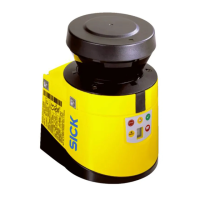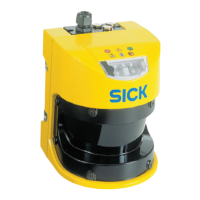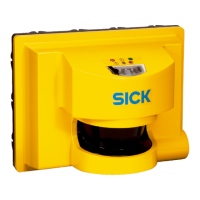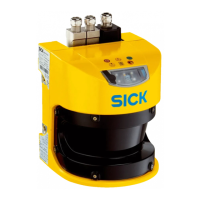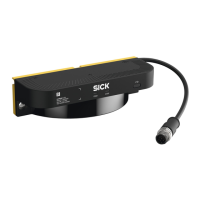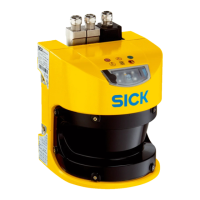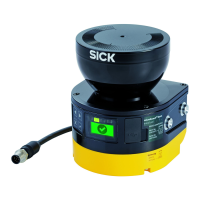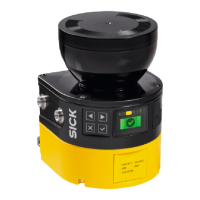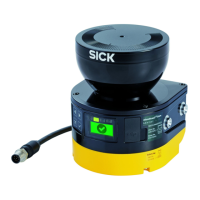Chapter 14 Operating instructions
S3000
172 © SICK AG • Industrial Safety Systems • Germany • All rights reserved 8009942/WK81/2012-11-28
Subject to change without notice
Annex
14.4 List of tables
T
ab. 1: Overview on disposal by components ................................................................ 14
Tab. 2: Functions of the I/O modules ............................................................................. 23
Tab. 3: Possible applications for the S3000 variants....................................................24
Tab. 4: Interoperability with safety laser scanners ........................................................ 31
Tab. 5: Interoperability with safety laser scanners in compatibility mode.................... 31
Tab. 6: Functions of the I/O modules in compatibility mode......................................... 34
Tab. 7: Required compatibility mode with different firmware versions of the
S3000 in an EFI system with other S3000 ........................................................ 35
Tab. 8: Required compatibility mode with different firmware versions of the
S3000 in an EFI system with other safety laser scanners................................ 35
Tab. 9: Comparison of mobile and stationary applications ........................................... 37
Tab. 10: Maximum protective field ranges ....................................................................... 38
Tab. 11: Figure from experience for the necessary input delay ...................................... 44
Tab. 12: Level at the connections for the control inputs for complementary
sampling...............................................................................................................44
Tab. 13: Truth table for 1<of<n sampling with two input pairs..........................................45
Tab. 14: Behavior of the S3000 on a contactor malfunction .......................................... 47
Tab. 15: Number of field sets that can be configured per variant and use.................... 51
Tab. 16: Number of monitoring cases per variant and application................................. 57
Tab. 17: Truth table with complementary evaluation....................................................... 58
Tab. 18: Truth table for 1<of<n sampling ........................................................................... 59
Tab. 19: Recommended multiple sampling...................................................................... 63
Tab. 20: Advantages and disadvantages of mounting variations ................................... 71
Tab. 21: Unprotected areas ............................................................................................... 82
Tab. 22: Size of the unprotected areas.............................................................................84
Tab. 23: Pin assignments of the I/O modules .................................................................. 97
Tab. 24: Use the cable entries supplied..........................................................................100
Tab. 25: Recommended wire cross-sections..................................................................100
Tab. 26: Pin assignment pre<assembled system plug....................................................102
Tab. 27: Pin assignment configuration connection M8× 4............................................103
Tab. 28: 7<segment display during and after the power up sequence on initial
commissioning...................................................................................................121
Tab. 29: LED indication after the power up sequence...................................................121
Tab. 30: 7<segment display during and after the power up sequence on re-
commissioning...................................................................................................124
Tab. 31: LED indication after the power up sequence...................................................125
Tab. 32: Compatibility of the Standard I/O module........................................................129
Tab. 33: Compatibility of the Advanced I/O module.......................................................129
Tab. 34: Compatibility of the Professional I/O module ..................................................130
Tab. 35: Compatibility of the Remote I/O module..........................................................130
Tab. 36: Compatibility of the Expert I/O module ............................................................130
Tab. 37: Error and status indications on the LEDs.........................................................133
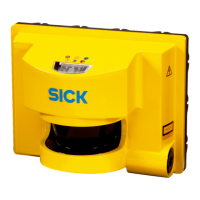
